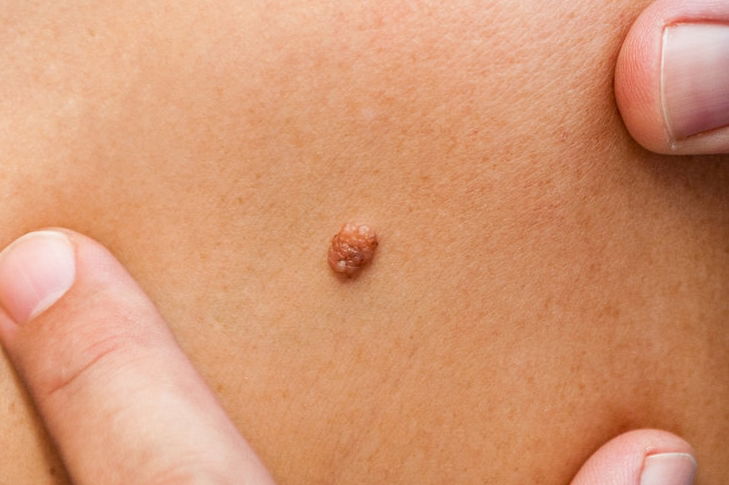Growth or Mole Removal

What Causes a Mole?
Moles occur when cells in the skin grow in a cluster instead of being spread throughout the skin. These cells are called melanocytes, and they make the pigment that gives skin its natural color. Moles may darken after exposure to the sun, during the teen years, and during pregnancy
Types of Moles
Congenital nevi are moles that are present at birth. Congenital nevi occur in about one in 100 people. These moles are slightly more likely to develop into melanoma (cancer) than are moles that appear after birth. A mole or freckle should be checked if it has a diameter of more than a pencil eraser or any characteristics of the ABCDEs of melanoma (see below).
Dysplastic nevi are moles that are generally larger than average (larger than a pencil eraser) and irregular in shape. They tend to have uneven color with dark brown centers and lighter, uneven edges. These nevi are somewhat more likely to become melanoma. In fact, people who have 10 or more dysplastic nevi have a 12 times higher chance of developing melanoma, a serious form of skin cancer. Any changes in a mole should be checked by a dermatologist to evaluate for skin cancer.
How Do I Know if a Mole Is Cancer?
The vast majority of moles are not dangerous. Moles that are more likely to be cancer are those that look different than other existing moles or those that first appear after age 25. If you notice changes in a mole's color, height, size, or shape, you should have a dermatologist (skin doctor) evaluate it. You also should have moles checked if they bleed, ooze, itch, or become tender or painful.


